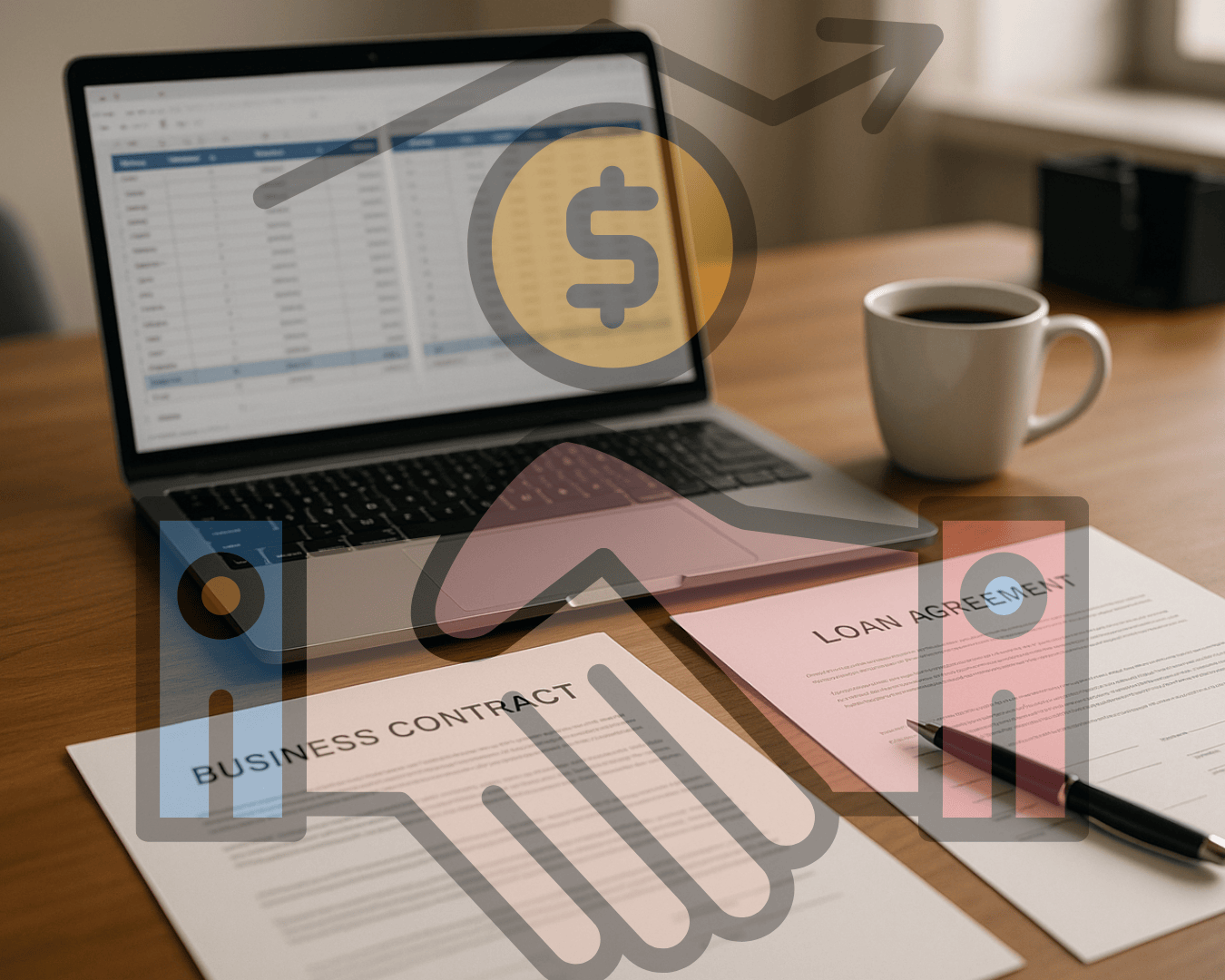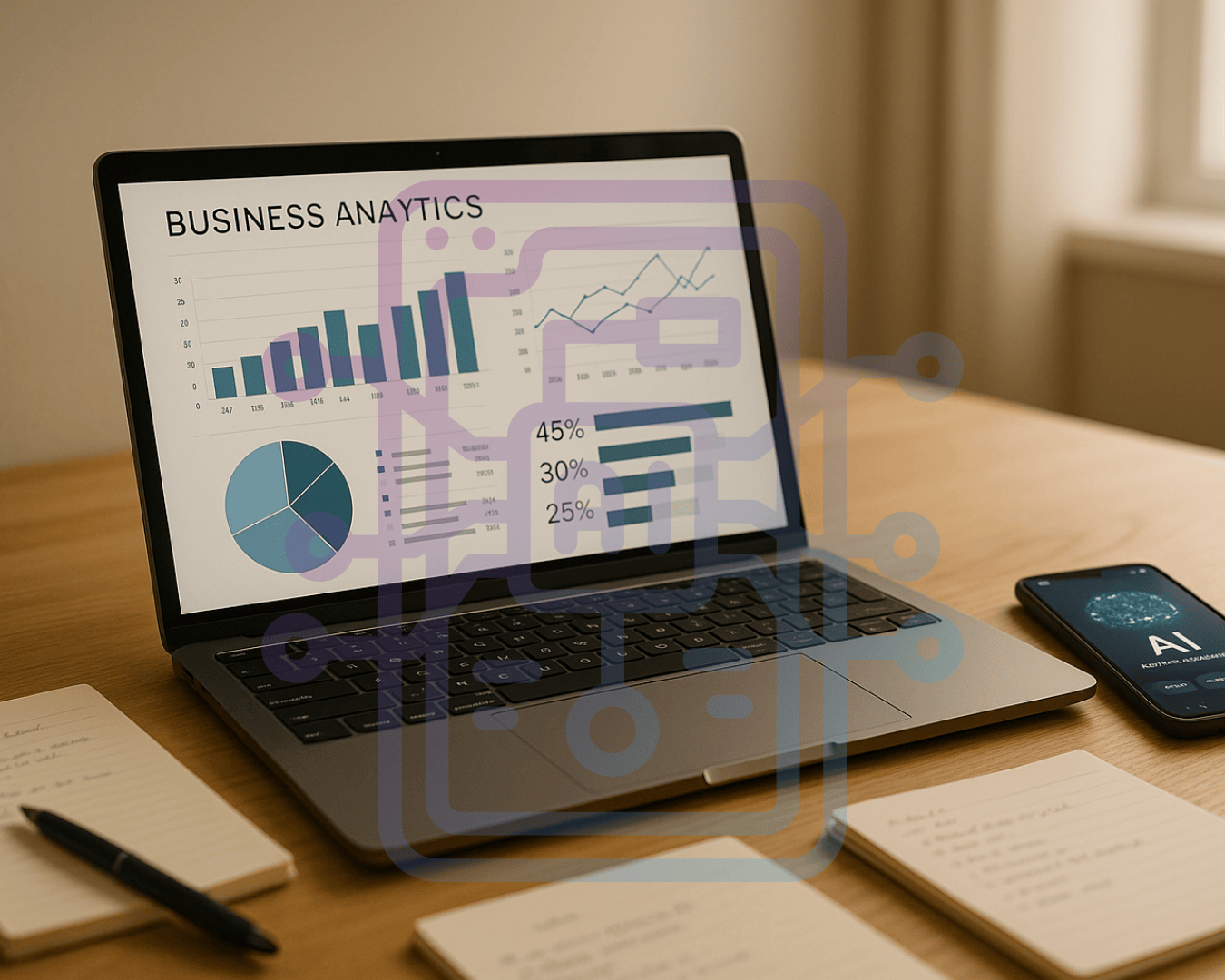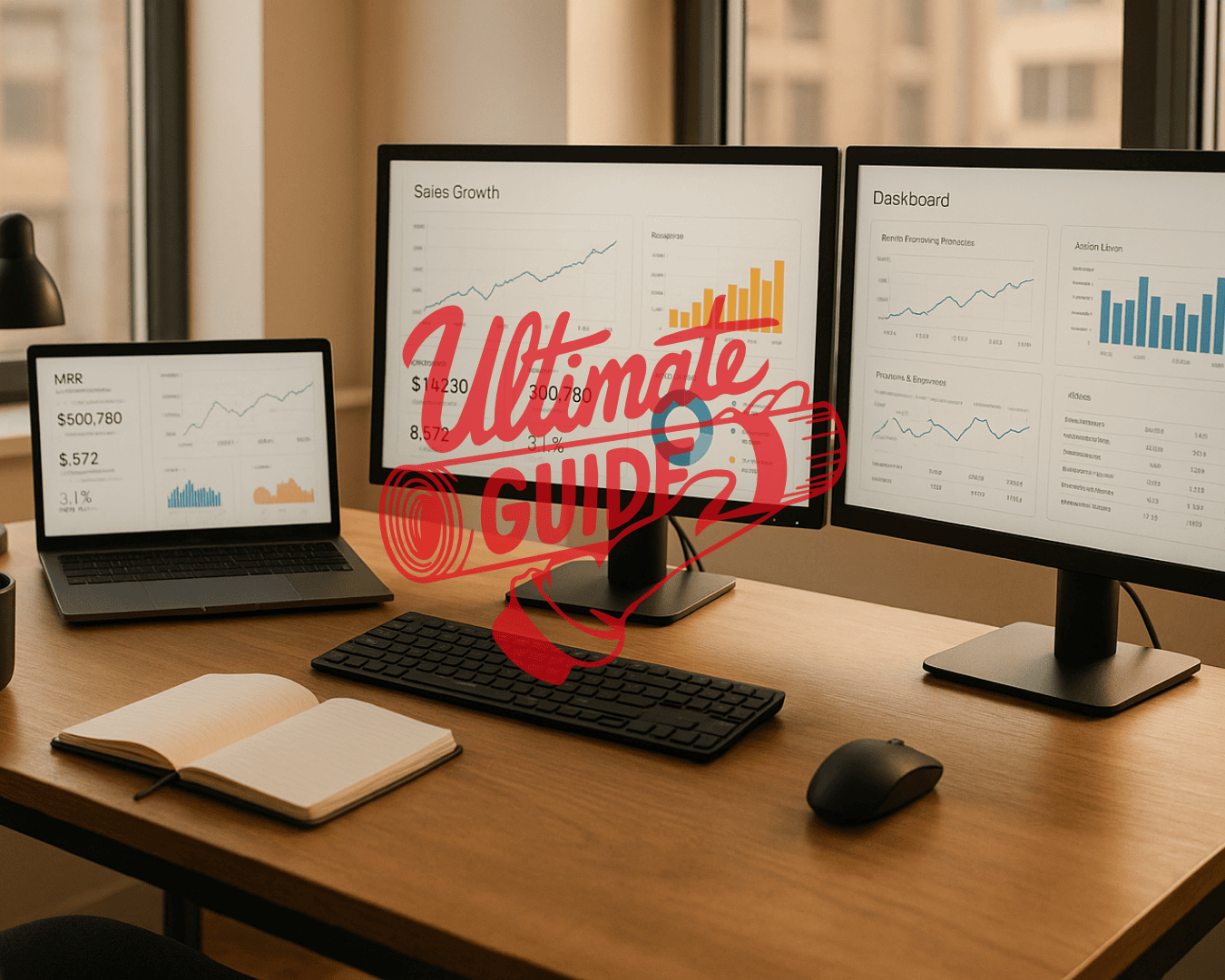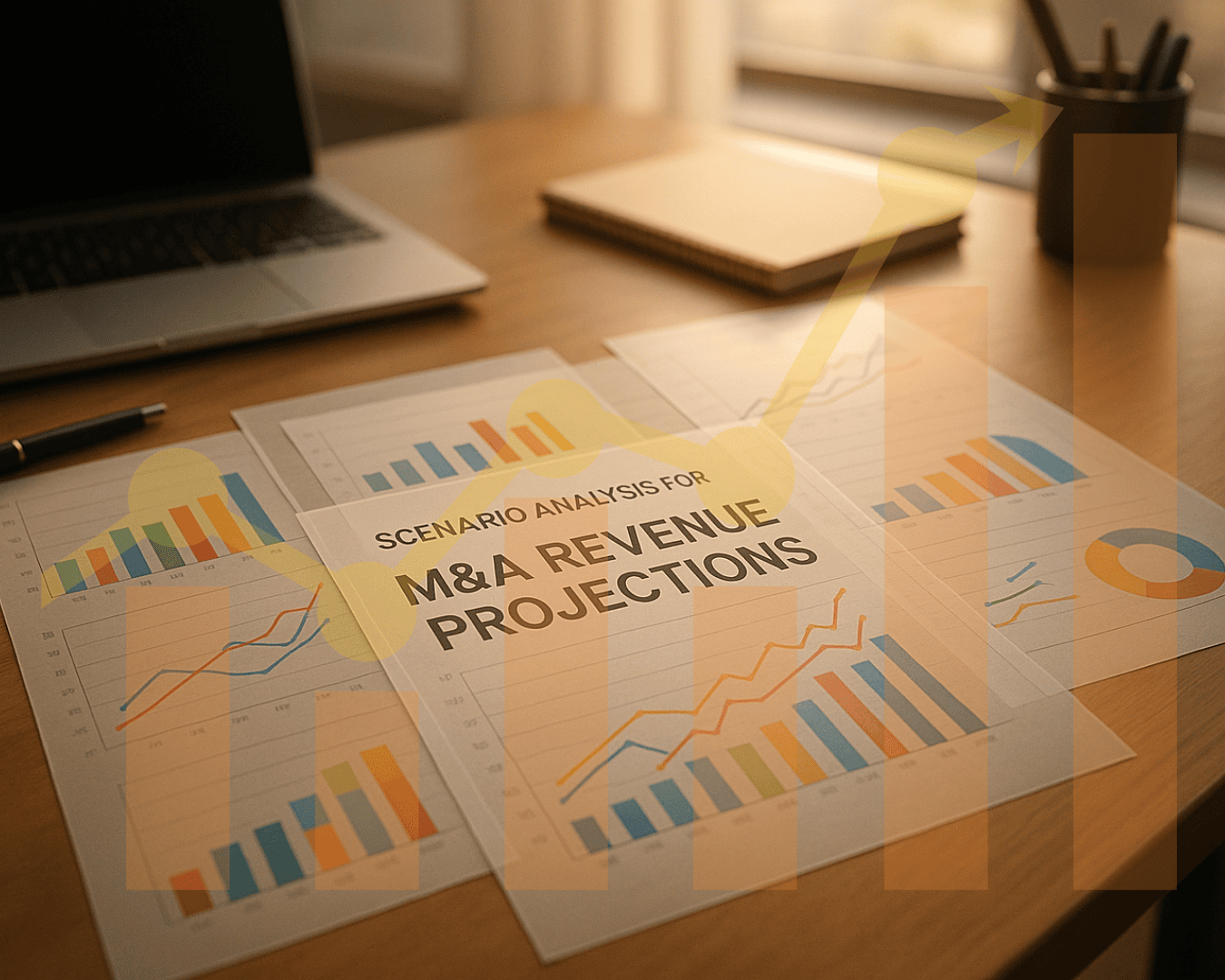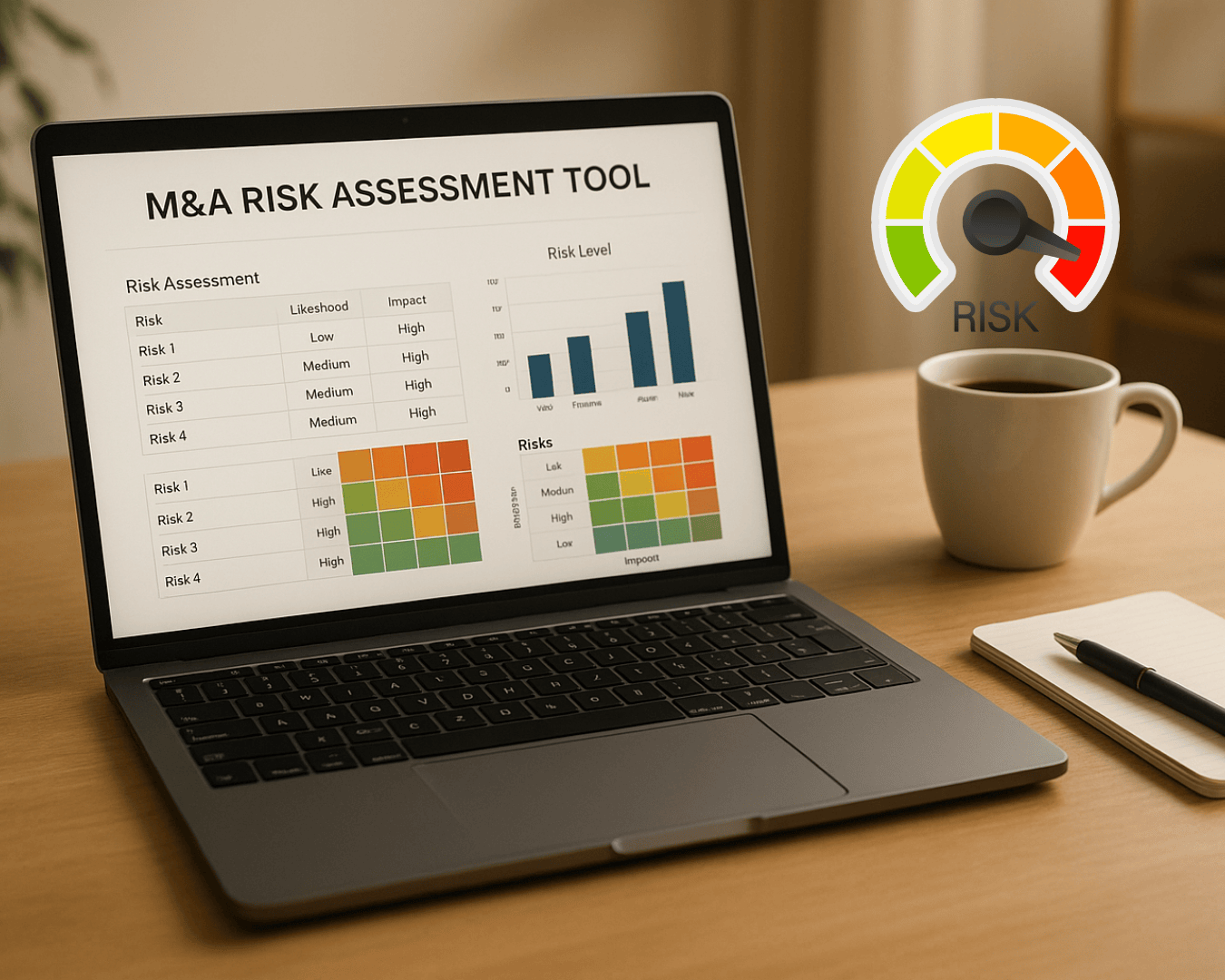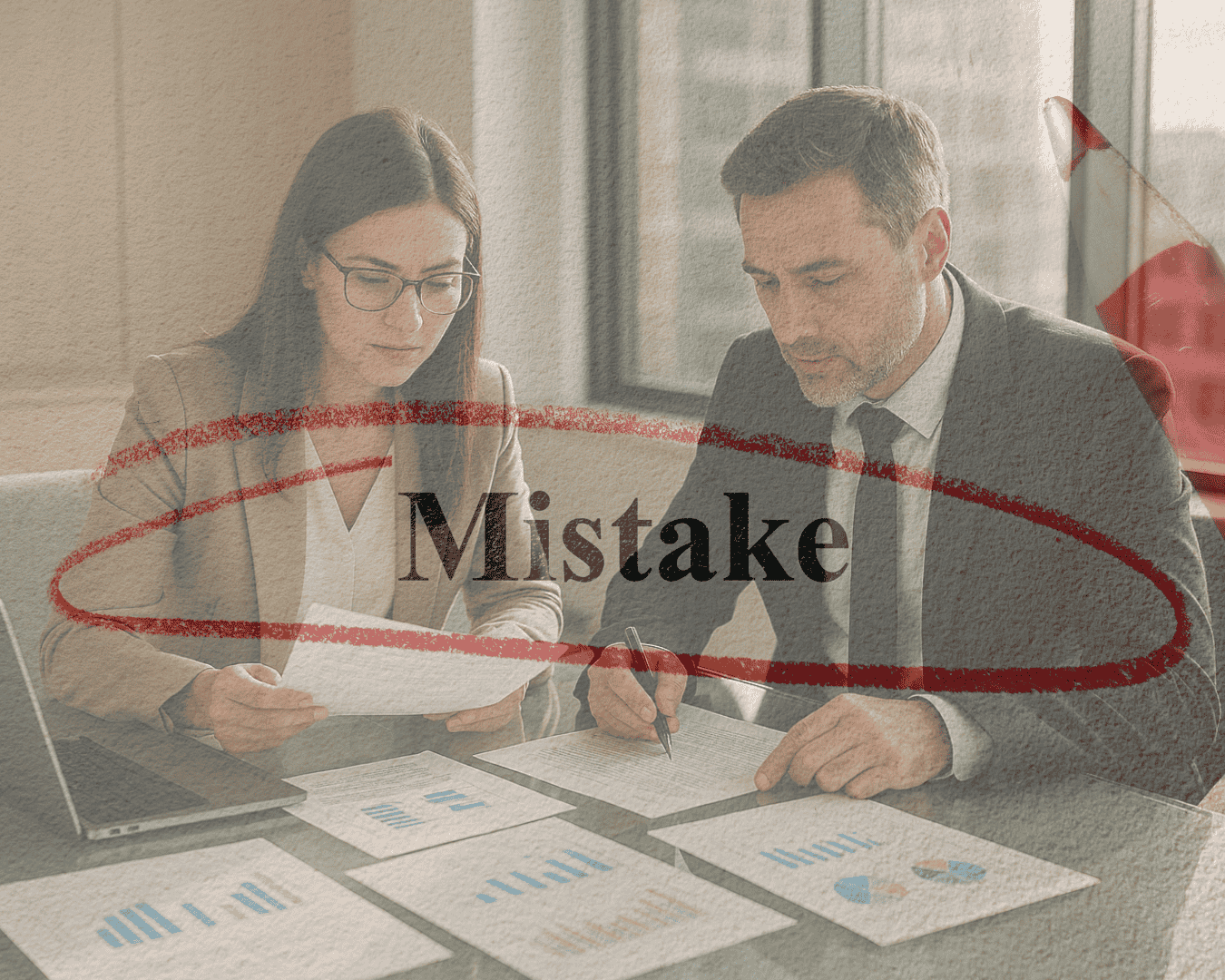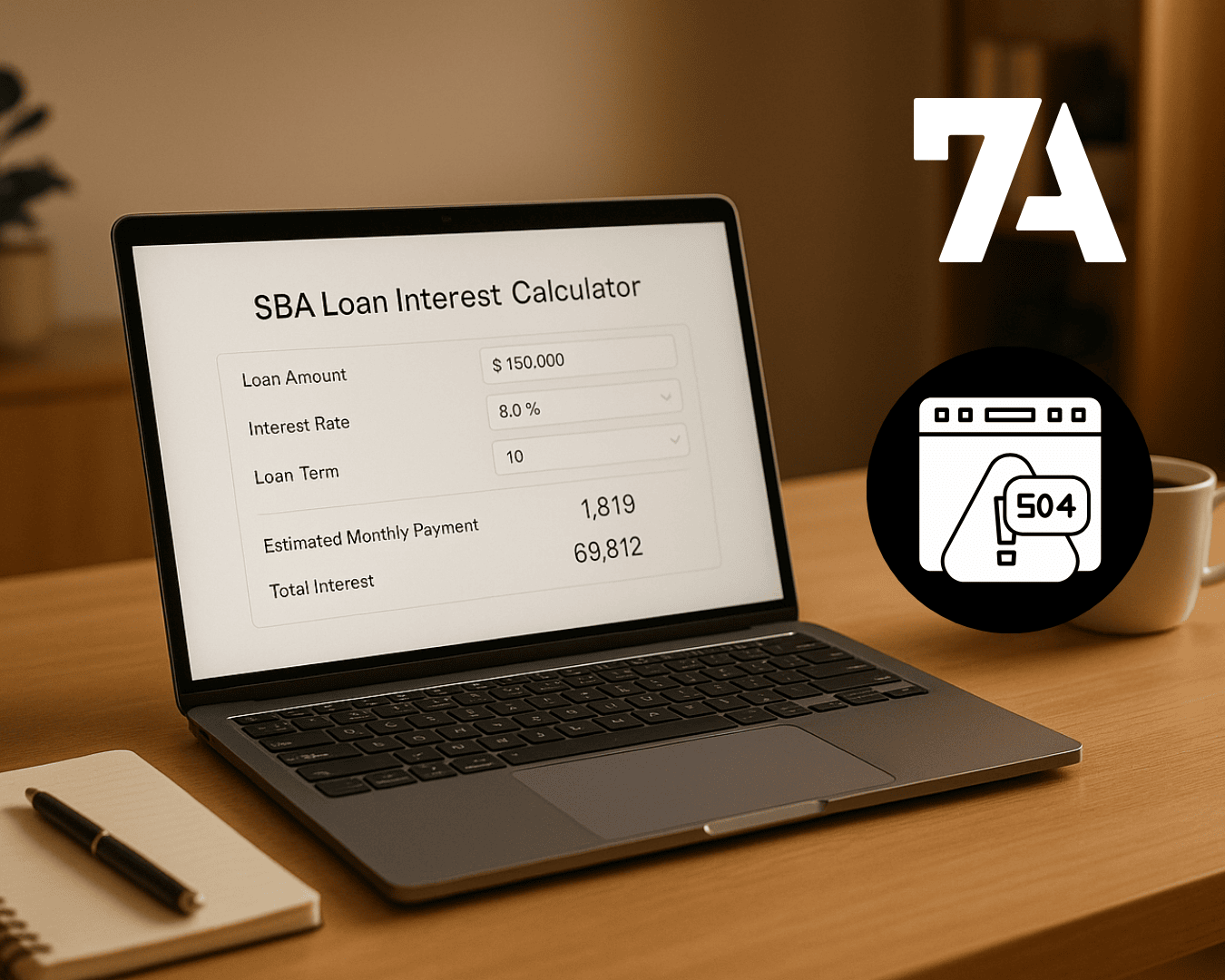Getting an SBA loan takes time, but knowing the steps can help you avoid delays. The process typically lasts 60–90 days, but being prepared can shorten it. Here's a quick breakdown of the key stages:
- Pre-Qualification (7–10 days): Determine eligibility and gather documents like tax returns, financial statements, and business plans.
- Application (10–14 days): Submit forms and supporting documents, including SBA Form 1919.
- Underwriting (14–21 days): Lenders review your financials, credit, and collateral. Third-party reports may be required.
- Approval & SBA Review (7–14 days): Lender approves the loan, and the SBA conducts its review.
- Closing & Disbursement (7–10 days): Sign final documents, meet conditions, and receive funds within 24–48 hours.
Key factors that impact timelines include your preparation, loan complexity, and third-party reports like appraisals. Staying organized and responding quickly to requests can save weeks. Platforms like Clearly Acquired can simplify the process with tools for lender matching, document management, and advisory support.
Bottom line: Preparation and timely communication are essential to navigate the SBA loan process efficiently.
How long Does it take to get an SBA Loan?
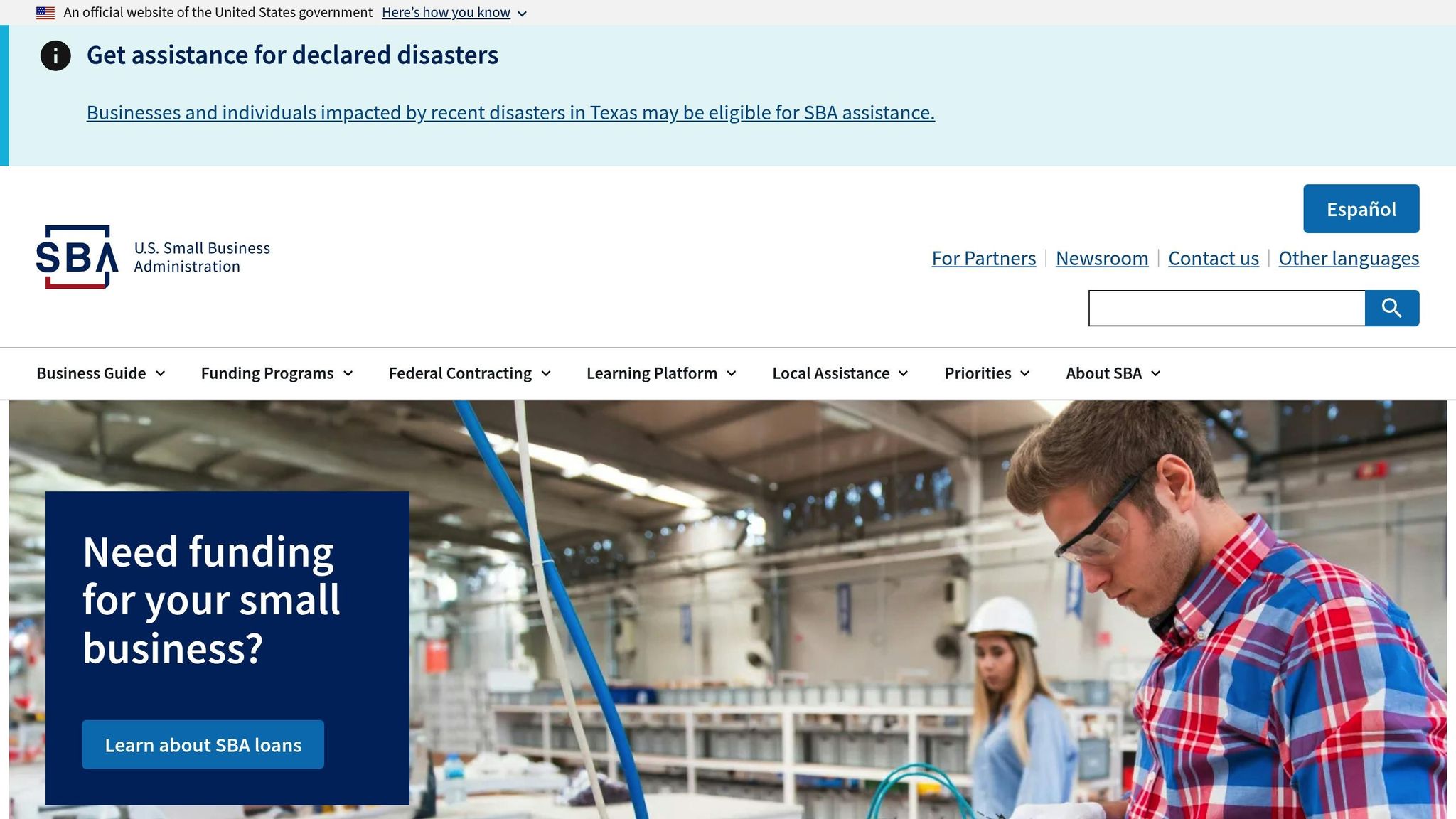
SBA Loan Process Overview
The SBA loan process unfolds over five key stages, each with its own requirements and timelines. Knowing what to expect at every step can help you stay organized and avoid delays that might slow down your funding.
Typically, the entire process takes 60 to 90 days from start to finish. However, good preparation can sometimes shorten this timeline. Let’s take a closer look at each phase to help you navigate the process more efficiently.
Pre-Qualification and Initial Lender Meeting
This first step is all about determining if you're a good fit for SBA financing and finding the right lender. During pre-qualification, lenders review basic eligibility factors like your credit score, business cash flow, and available collateral.
Your initial meeting with the lender will focus on your financing needs, your business model, and which SBA loan program suits your situation. For example, SBA 7(a) loans are often used for business acquisitions, while SBA 504 loans are geared toward real estate purchases.
To keep things moving, gather essential documents early. These include financial statements from the past three years, personal and business tax returns, bank statements, and a detailed business plan.
This phase generally takes 7–10 days, but delays can occur if documents aren’t ready or if credit improvements are needed.
Application Submission and Documentation
Once you’ve chosen a lender, you’ll move on to the formal application process. This involves completing SBA Form 1919 and any additional forms required by your lender.
You’ll need to provide a range of documents, including personal and business financial statements, profit and loss statements, balance sheets, and cash flow projections. Personal documents like tax returns, a personal financial statement, and a resume outlining your business experience are also required.
If you’re buying a business, you’ll need extra paperwork such as the purchase agreement, the seller’s tax returns, lease agreements, and environmental assessments if applicable. For equipment financing, include invoices, quotes, and equipment specs.
Most borrowers complete this step in 10 to 14 days, assuming all documents are readily available. However, gathering more complex items - like environmental reports or third-party valuations - can take longer.
Lender Underwriting and Internal Review
Underwriting is where the lender takes a deep dive into your financials and verifies all documentation. They’ll evaluate your business’s cash flow to ensure you can repay the loan and assess the overall risk.
Key metrics like your debt-service coverage ratio are analyzed to determine your repayment capacity. The lender will also review your credit history, industry experience, and the collateral backing the loan.
For larger loans, third-party reports - such as real estate appraisals, environmental assessments, or business valuations - may be required. These reports can add time but are critical for ensuring the lender has all the necessary information.
Underwriting typically takes 14 to 21 days, but complex cases, like those involving multiple properties or large real estate components, may require more time.
Approval, Commitment Letter, and SBA Review
Once the lender approves your loan internally, they issue a commitment letter and send your application to the SBA for final review.
The SBA’s processing times have improved in recent years. Standard reviews usually take 7 to 10 business days, while smaller loans may qualify for expedited processing, completed in as little as 36 hours. However, if the SBA requests additional information, it can extend the timeline.
During this stage, you’ll work to meet any conditions outlined in the commitment letter. This might include securing additional insurance, updating financial statements, or completing legal documentation.
This phase generally lasts 7 to 14 days, depending on how quickly you can address any outstanding requirements.
Loan Closing and Disbursement
The final step is closing the loan and disbursing the funds. Your lender will coordinate with attorneys, title companies, and other parties to ensure all legal documents are signed and executed properly.
Closing documents include the promissory note, security agreements, personal guarantees, and any real estate-related paperwork. You’ll also need to provide proof of insurance and meet any other conditions from the commitment letter.
For business acquisitions, the closing process ensures loan funds are available to complete the purchase while protecting the lender’s interests. In cases involving construction or equipment purchases, funds may be released in stages as work progresses or equipment is delivered.
Funds are typically disbursed within 24 to 48 hours after all closing conditions are met. The entire closing process usually takes 7 to 10 days, though more complex transactions may require extra coordination.
Step-by-Step Timeline and Key Actions
Understanding the SBA loan process can help you stay organized and avoid unnecessary delays. Each phase comes with specific tasks, and knowing what to expect can keep things moving smoothly.
Pre-Qualification and Initial Consultation
Your first meeting with a lender is an essential step in the process. Be ready to clearly explain your financing needs and the terms you're seeking. During pre-qualification, lenders typically assess three main factors: your credit, your business's cash flow, and the collateral you can offer.
Before the meeting, review your credit report and your business's financial performance. If your credit score is on the lower side, you may need to address this or provide explanations to the lender.
Prepare a concise summary of your financing request. Include the loan amount, how you’ll use the funds, and how they’ll support your business goals. If you’re purchasing a business, provide relevant details like the purchase price, basic information about the company, and your experience in the industry.
Gather all necessary documents ahead of time. This step usually takes about 7–10 days, so acting quickly can save time. Once your documents and financial overview are ready, you can proceed to submit your application.
Submitting a Complete Application
A complete application is key to avoiding delays. Missing or incomplete information can slow down the process significantly, so double-check everything before submitting.
Carefully review all financial and legal documents for accuracy. Pay close attention to your personal financial statement to ensure all assets and liabilities are correctly reported.
If the loan involves a business acquisition, organize your documents in a clear and logical order. For industries that may require environmental assessments, such as fuel storage or dry cleaning, start these reports early - they can take several days to complete.
Use a document checklist to verify that everything is in place before submission. Once the application is complete, the process moves to the underwriting phase.
Navigating the Underwriting Process
Underwriting is a detailed review of your application, and your responsiveness during this stage can make a big difference. Underwriters will analyze your debt-service coverage ratio to confirm that your business generates enough cash flow to cover its debt.
Prepare for potential requests for additional documents, such as updated financial statements, explanations for unusual transactions, or clarifications about relationships with suppliers or customers. Responding quickly to these requests helps keep things on track.
Third-party reports like real estate appraisals or business valuations can also affect the timeline. Be aware of the expected turnaround times for these reports and factor them into your overall plan.
Keep in regular contact with your lender during underwriting to stay informed and address any issues promptly.
Securing Approval and Addressing Conditions
Once your loan is internally approved, you’ll receive a commitment letter that outlines specific conditions you need to meet before closing. These conditions might include updating insurance policies or providing additional financial documents.
The SBA review process has become more efficient in recent years, but larger loans or complex business structures may still require extra clarification. When the SBA requests additional information, provide thorough and complete responses to avoid delays.
Meeting these conditions promptly is essential to staying within the typical 60–90 day timeline for the loan process.
Finalizing Loan Closing and Receiving Funds
The closing phase involves coordinating with various parties, including your lender, attorney, title company (for real estate transactions), and insurance providers. Proper coordination ensures a smooth and timely disbursement of funds.
Review all closing documents carefully and work with the necessary parties to finalize everything. For business acquisitions, make sure the timing aligns with the seller to facilitate a seamless ownership transfer.
Funds are usually disbursed within 24 to 48 hours after closing, though this can vary depending on the transfer method and transaction requirements.
Be prepared for potential last-minute issues, such as title discrepancies or gaps in insurance coverage, which could delay the process. Staying flexible and ready to address these challenges will help you complete the process without disrupting your business plans.
sbb-itb-a3ef7c1
Factors That Affect SBA Loan Timelines
When it comes to SBA loans, the timeline can vary widely depending on several factors. Knowing what influences these timelines can help you prepare more effectively and avoid unnecessary delays.
Loan Type and Complexity
The type of SBA loan you're applying for plays a big role in how long the process takes. Some loans, like those for commercial real estate or business acquisitions, come with added layers of complexity. These often require extra steps like property appraisals, environmental assessments, and thorough due diligence. On the other hand, loans for refinancing existing debt tend to move faster since they focus on evaluating established cash flow and operations, which are simpler to assess.
Applicant Preparedness
Your level of preparedness can make or break your timeline. Submitting incomplete or outdated financial documents - like older tax returns or missing key details - can lead to significant delays.
Another common bottleneck is slow communication. If underwriters request additional documents or clarification and you take too long to respond, they may prioritize other applications. This could result in your file being reassessed from scratch, further delaying the process.
Credit issues can also slow things down. For instance, personal credit scores below 650, unresolved tax obligations, or collection items can lead to more scrutiny. If you've faced bankruptcy or defaulted on loans in the past, expect these factors to add extra time to the review process.
Third-Party Involvement
Even with all your documentation in order, external reviews and approvals can still impact your timeline. Third-party services, like property appraisals or environmental assessments for commercial real estate, often take additional time. Legal reviews can also be a hurdle, especially if your loan involves complex partnership agreements, franchise documentation, or regulatory compliance. Unresolved issues like pending licenses, zoning approvals, or permits can further delay the process.
To reduce delays caused by third parties, it’s a good idea to start these reviews as early as possible. For example, ordering appraisals and environmental reports right after your application is accepted can help keep things moving smoothly.
How Clearly Acquired Speeds Up the SBA Loan Process
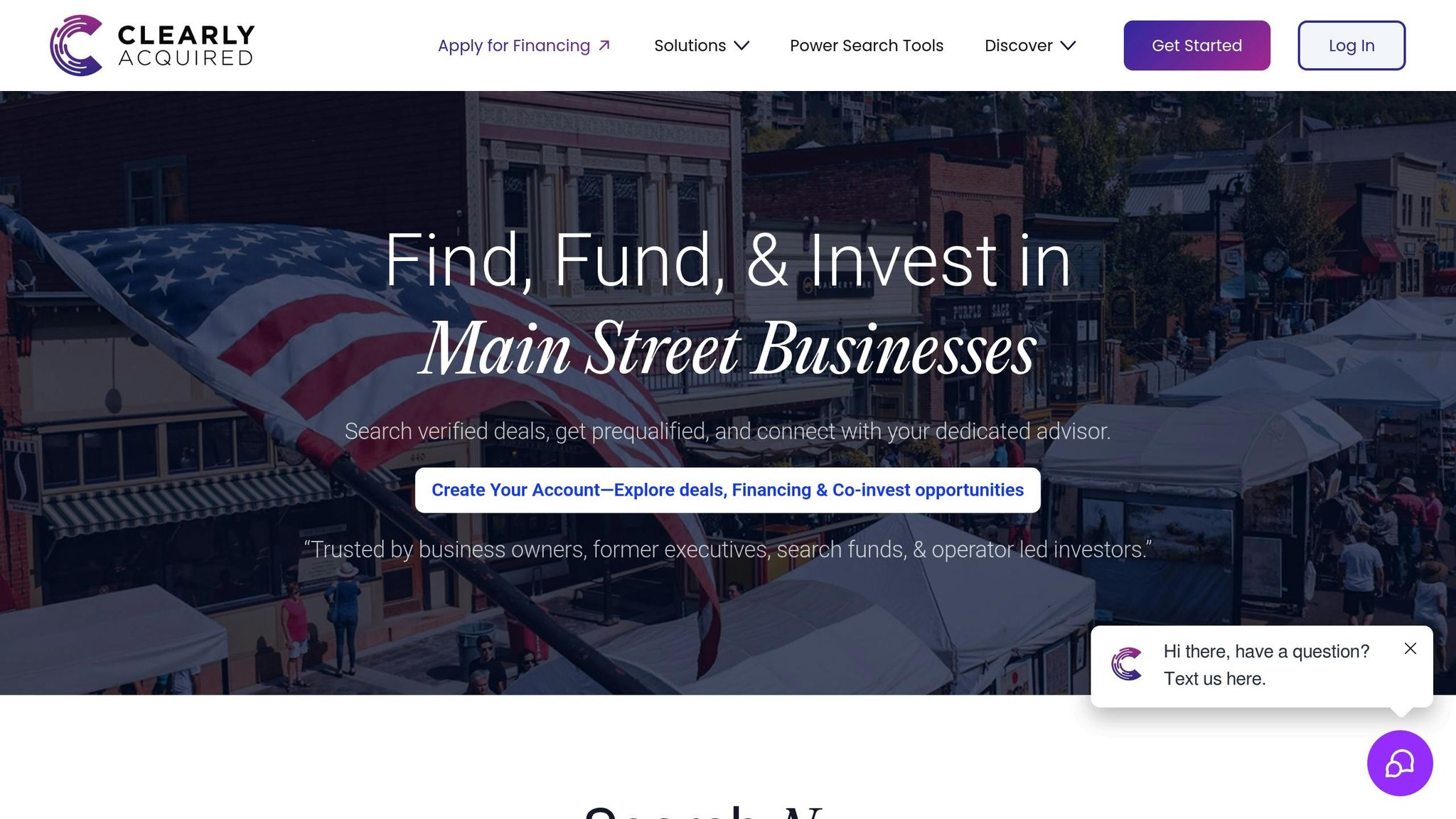
Clearly Acquired leverages advanced tools and technology to streamline every stage of the SBA loan process. By addressing common bottlenecks that often slow traditional lending, the platform helps applicants move from start to funding more quickly than typical industry timelines.
Clearly Acquired's SBA Loan Marketplace
One of the biggest hurdles in securing an SBA loan is finding the right lender. This process can take weeks of research and endless phone calls. Clearly Acquired's SBA Loan Marketplace eliminates that hassle by connecting you directly with a network of efficient SBA lenders known for high approval rates. This targeted approach ensures you’re matched with lenders suited to your specific needs, saving valuable time.
The platform also offers automated pre-qualification tools that provide instant feedback on your eligibility for various SBA loan products. By entering key details like your credit score, business financials, and acquisition specifics, you’ll gain a clear understanding of your standing before committing to a full application. This upfront clarity helps you address potential gaps or issues early, avoiding surprises later in the underwriting process.
For more complex transactions, Clearly Acquired supports creative financing solutions, blending SBA loans with equity while ensuring compliance. This flexibility can mean the difference between closing a deal successfully or facing setbacks due to financing constraints. All these features work together to streamline the process, from lender matching to document preparation and beyond.
Streamlined Document Management and Expert Guidance
Document collection is often one of the most time-consuming parts of the SBA loan process, sometimes taking up to a month. Incomplete or disorganized submissions are a major cause of delays. Clearly Acquired tackles this issue with a secure, centralized document management system. Tailored checklists, automated reminders, and secure data rooms make it easy to organize and share necessary files with lenders in real-time.
Beyond just managing documents, Clearly Acquired provides expert advisory support. Their team of SBA loan professionals helps you interpret lender feedback, clarify compliance requirements, and resolve potential issues before they escalate. This hands-on guidance reduces the likelihood of mistakes that could lead to delays or denials.
When external services like appraisals or environmental assessments are required, the platform connects you with a vetted network of professionals familiar with SBA timelines and standards. Instead of scrambling to find qualified providers mid-process, you can seamlessly engage these services through the platform, keeping your loan application on track.
Integrated Tools for Business Acquisition and Financing
Traditional business acquisitions often require juggling multiple tools, service providers, and communication channels - an overwhelming task, especially for first-time buyers. Clearly Acquired simplifies this by integrating deal sourcing, due diligence, and financing tools into one platform. From initial business searches to final closing, everything you need is accessible in a single interface.
The platform allows you to search for verified businesses, execute automated NDAs, and initiate SBA loan applications directly from deal listings. Real-time updates on loan status and closing timelines eliminate the need for constant manual coordination, speeding up the entire process.
According to internal data, applicants using Clearly Acquired’s comprehensive platform experience a 25-40% faster loan processing time compared to industry averages. Additionally, qualified applicants see approval rates exceeding 80%. These outcomes are driven by precise lender matching, better-prepared documentation, and continuous expert support throughout the journey.
Conclusion: Managing Your SBA Loan Process
Navigating the SBA loan process successfully requires a solid understanding of the timeline, staying organized, and making use of helpful resources. These government-backed loans offer several advantages for small businesses, including lower interest rates, longer repayment terms, and access to funding that might otherwise be out of reach .
Being well-prepared is your biggest asset. Submitting complete documentation and responding quickly to lender requests can shave 10–20 days off the process compared to applicants who delay. Timely responses to additional information requests also help avoid unnecessary slowdowns and keep things moving.
On top of preparation and communication, technology can simplify the process even further. Platforms like Clearly Acquired integrate tools for deal sourcing, document management, and financing into one system, making coordination easier and timelines shorter. These tools centralize documentation and streamline communication with lenders, creating a smoother experience.
Taking the time to manage your SBA loan process effectively does more than speed up funding - it sets the stage for long-term business success. SBA loans are designed to support acquisitions, expansions, and working capital needs, all while preserving cash flow through lower down payments and extended repayment terms. This type of financing equips small businesses with the resources they need to grow and compete.
Whether you're buying your first business or expanding an existing one, the SBA loan process doesn't have to feel overwhelming. From pre-qualification to closing, focus on preparation, work with experienced partners, and utilize tools that simplify each step. With a clear understanding of the process and the right support, managing your SBA loan becomes much more straightforward.
FAQs
How can I make sure my SBA loan application is completed within 60-90 days?
To keep your SBA loan process on track within the typical 60-90 day timeline, preparation and organization are essential. Start by gathering all necessary documents ahead of time. This includes your most recent tax returns, up-to-date financial statements, and a well-detailed business plan. Make sure those financial documents are no older than 90 days.
Partnering with an experienced SBA lender can also make a big difference. They’ll walk you through the requirements and help ensure everything is submitted correctly. Staying responsive to their requests and promptly providing any additional information they need will help avoid unnecessary holdups.
By staying proactive and keeping things in order, you’ll set yourself up for a smoother and faster loan process.
What third-party reports are needed for an SBA loan, and how can I get ready for them?
During the SBA loan process, lenders typically request third-party reports to thoroughly evaluate the property and ensure all due diligence requirements are met. These reports provide critical insights into various aspects of the property, including:
- Appraisals: These help establish the property's market value.
- Environmental site assessments: Used to pinpoint any environmental risks or concerns tied to the property.
- Property condition reports: Offer a detailed look at the property's physical state and any necessary repairs.
- Title reports: Verify legal ownership and check for any existing liens or claims against the property.
- Lease audits: Examine lease agreements to confirm terms and conditions.
To stay ahead, gather all relevant documents, such as property records or lease agreements, ahead of time. It's also a good idea to arrange inspections with qualified professionals, like certified appraisers or environmental consultants. Staying organized and addressing these steps early can help ensure the process moves smoothly and without unnecessary delays.
How does Clearly Acquired help speed up the SBA loan process?
Clearly Acquired takes the hassle out of the SBA loan process with tailored tools, specialized support, and a single platform to handle every phase of the application. Whether it's identifying opportunities or locking in the ideal capital structure, the platform simplifies steps that are often lengthy and complicated.
By integrating powerful analytics, deal management features, and lending assistance, Clearly Acquired shortens the usual SBA loan timeline of 45 to 90 days. This enables entrepreneurs and investors to wrap up deals faster and more effectively.







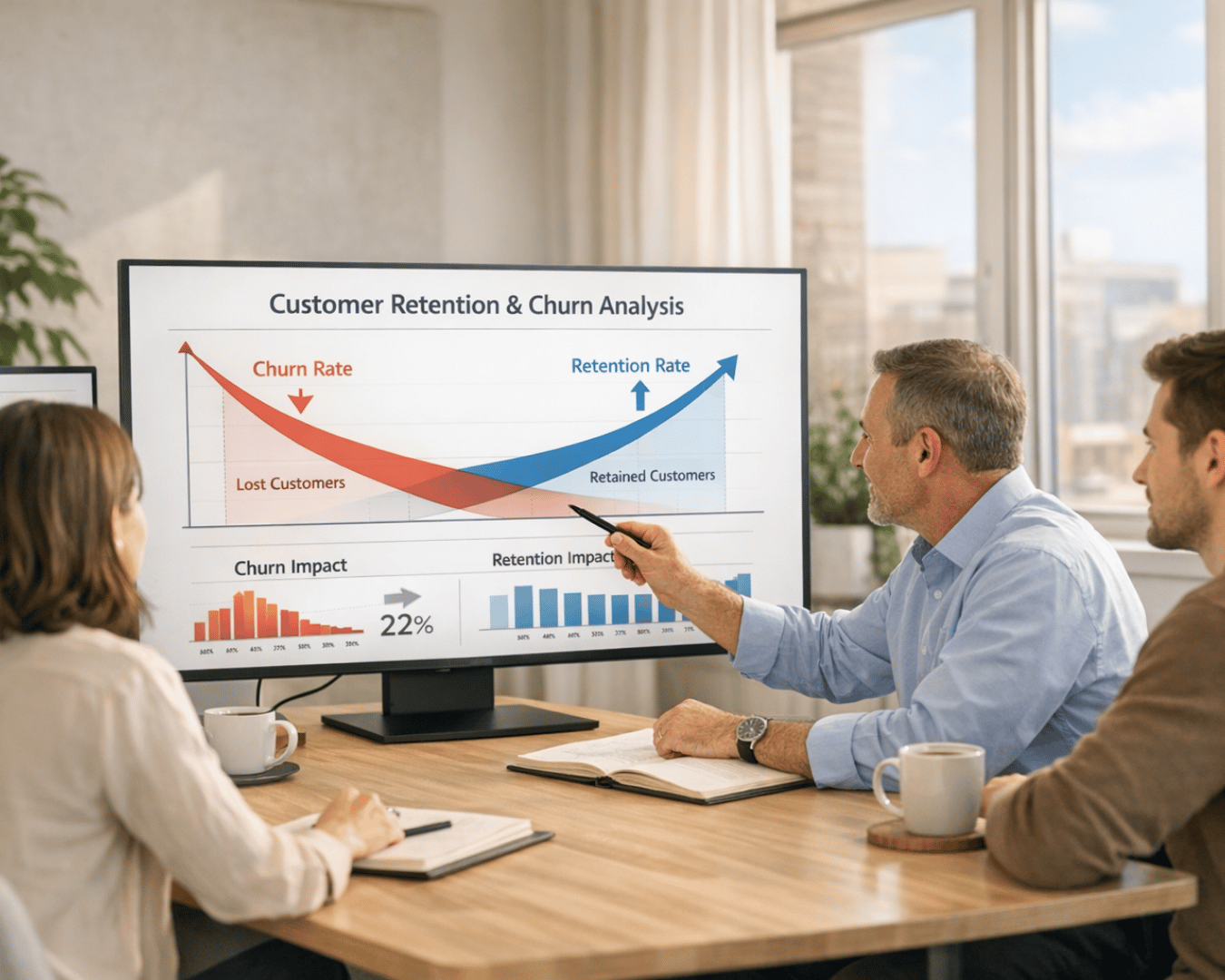










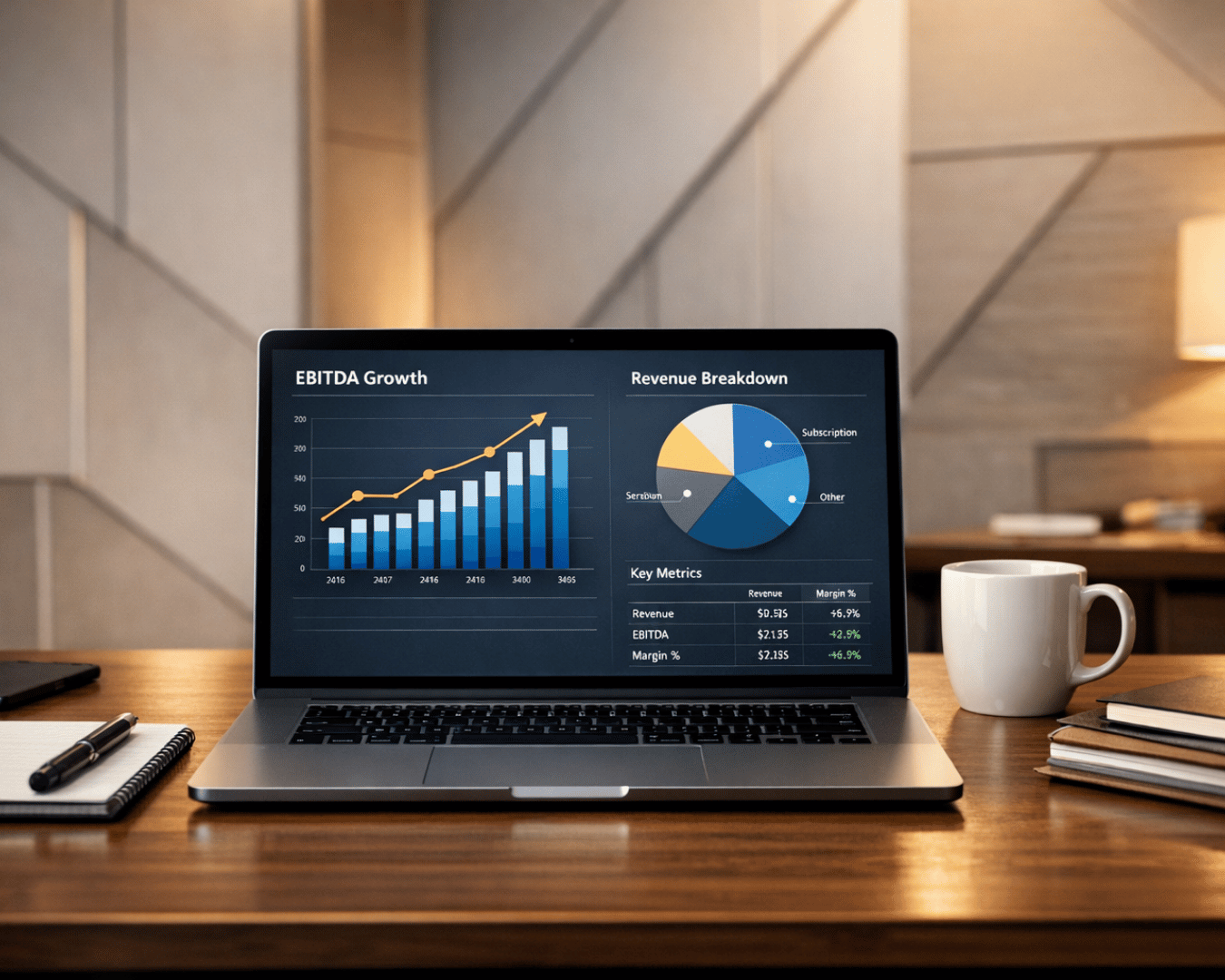






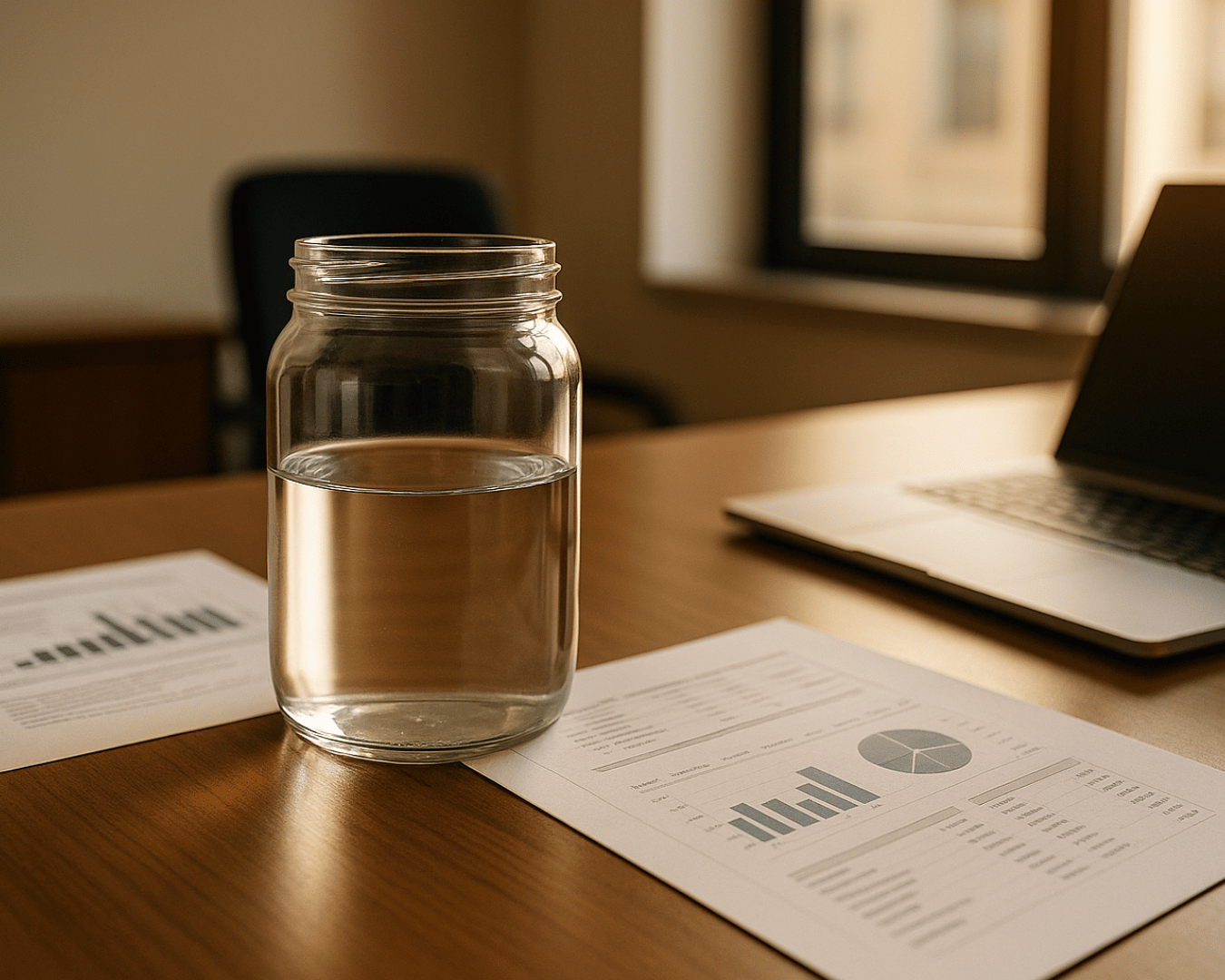

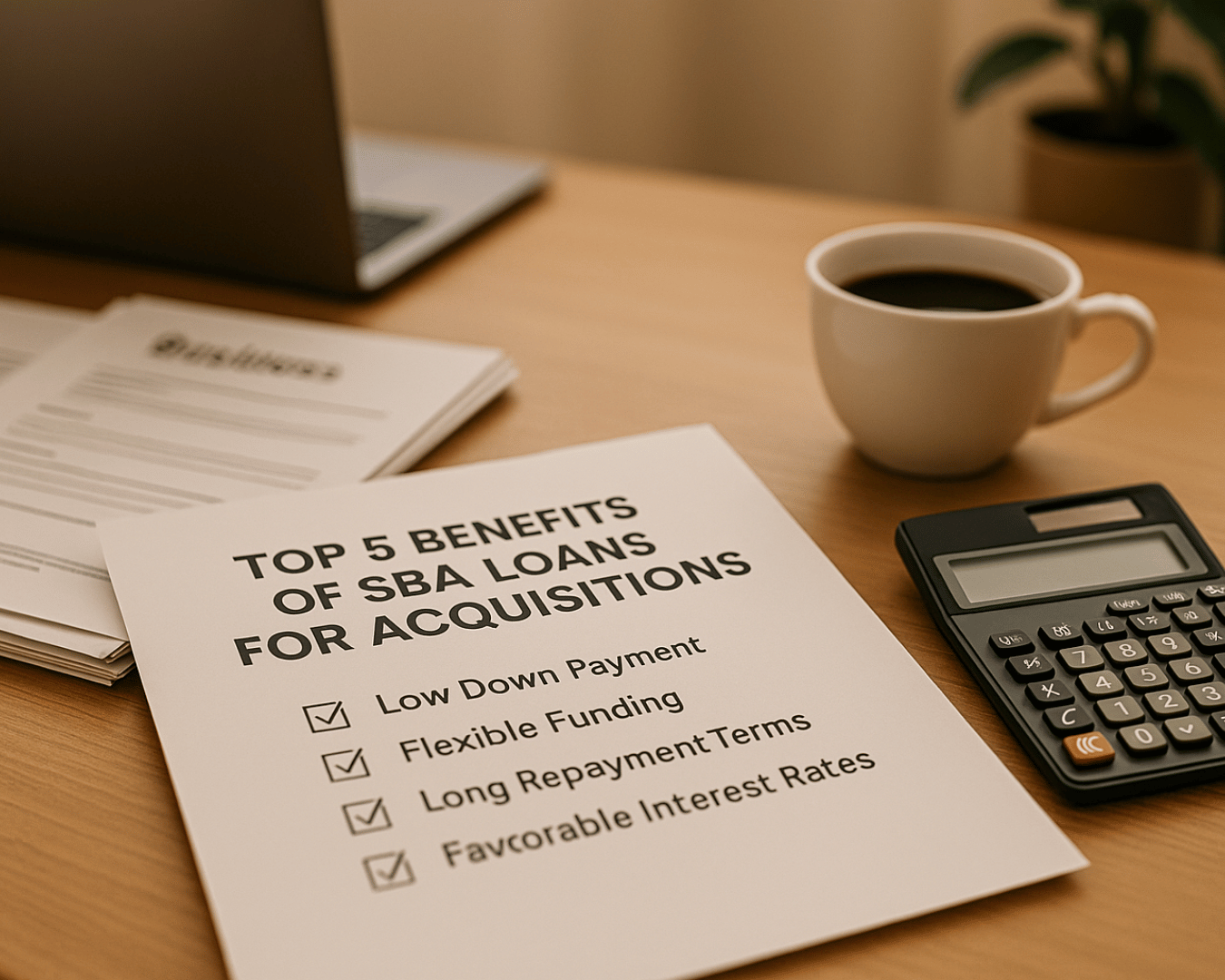

.png)
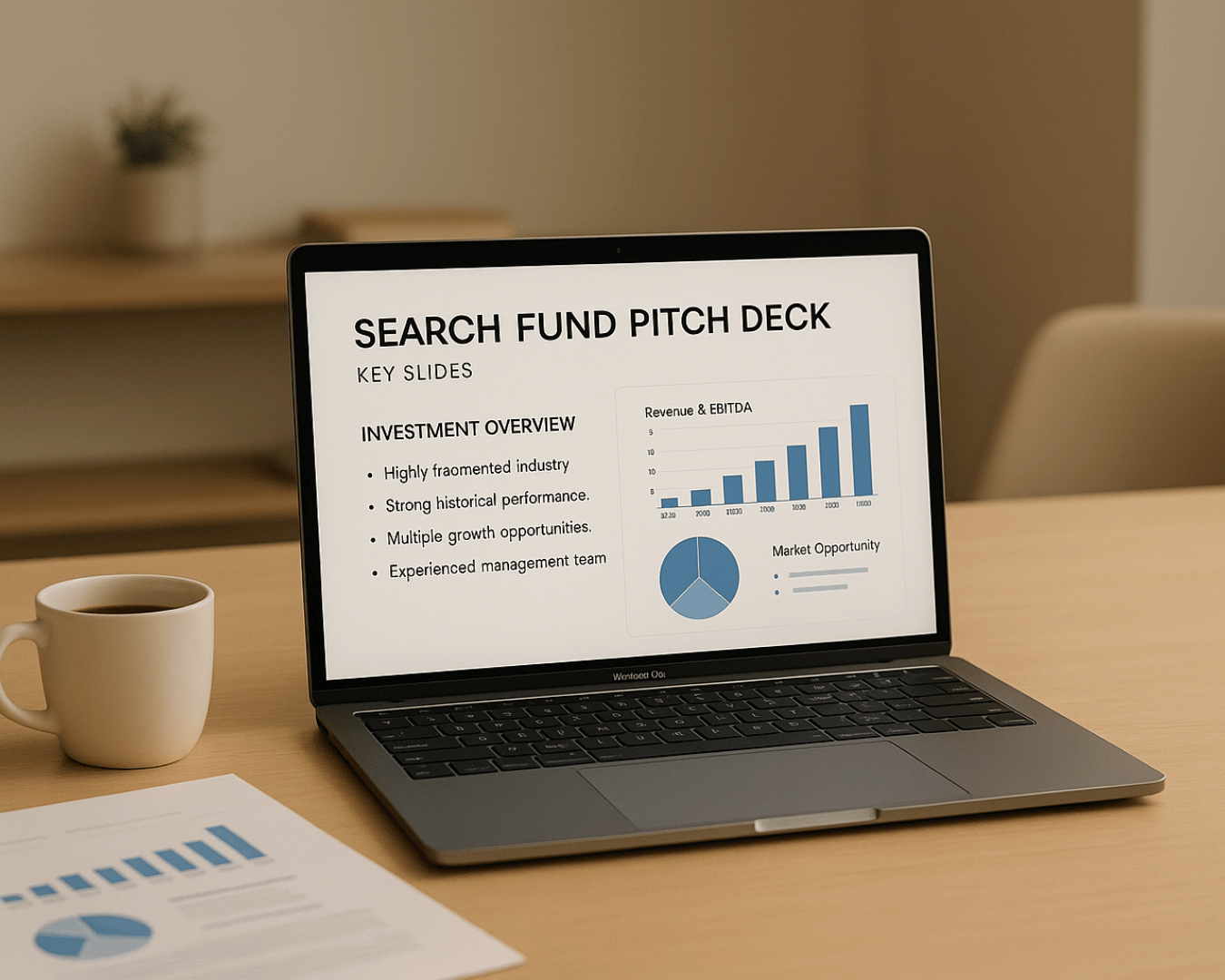











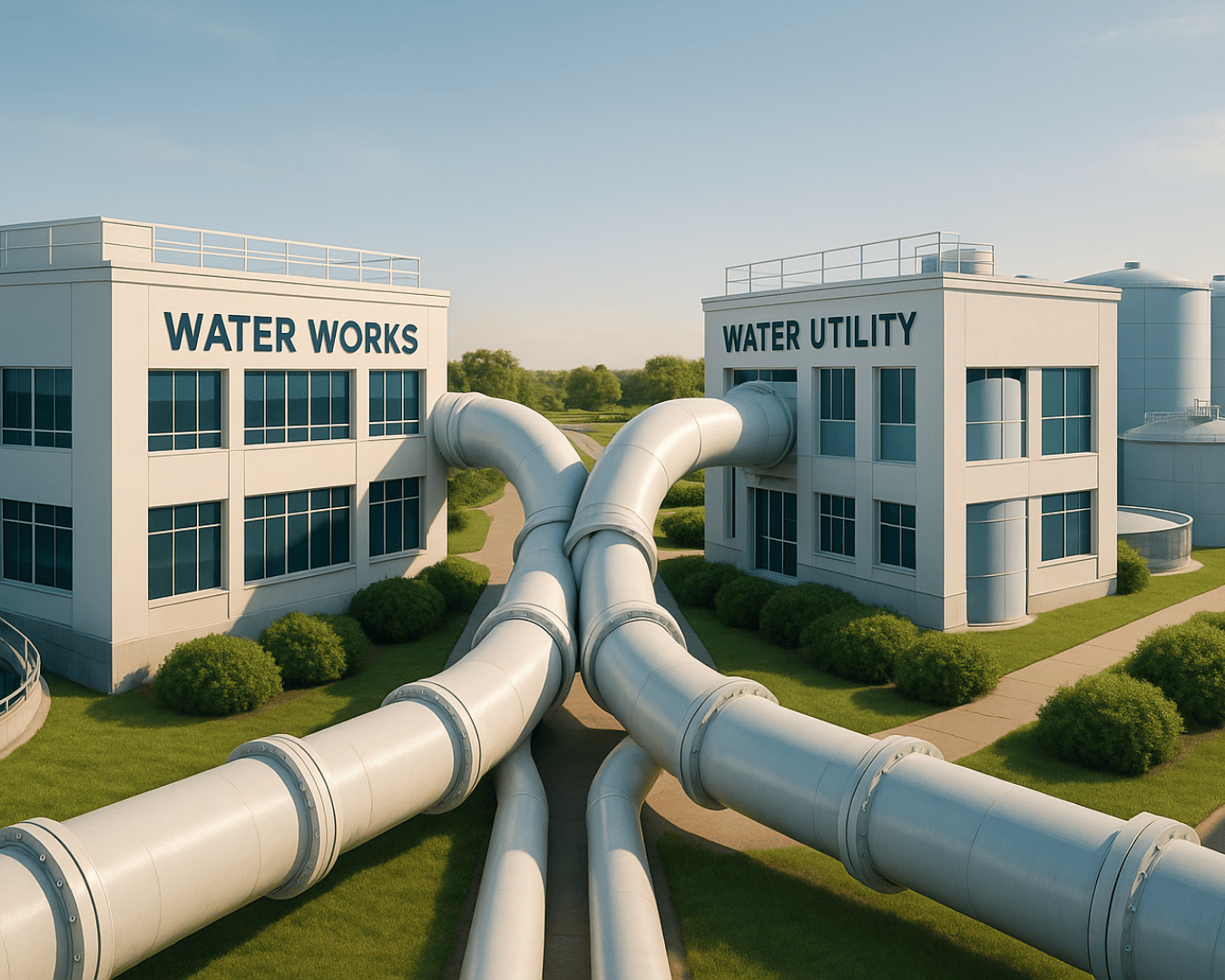




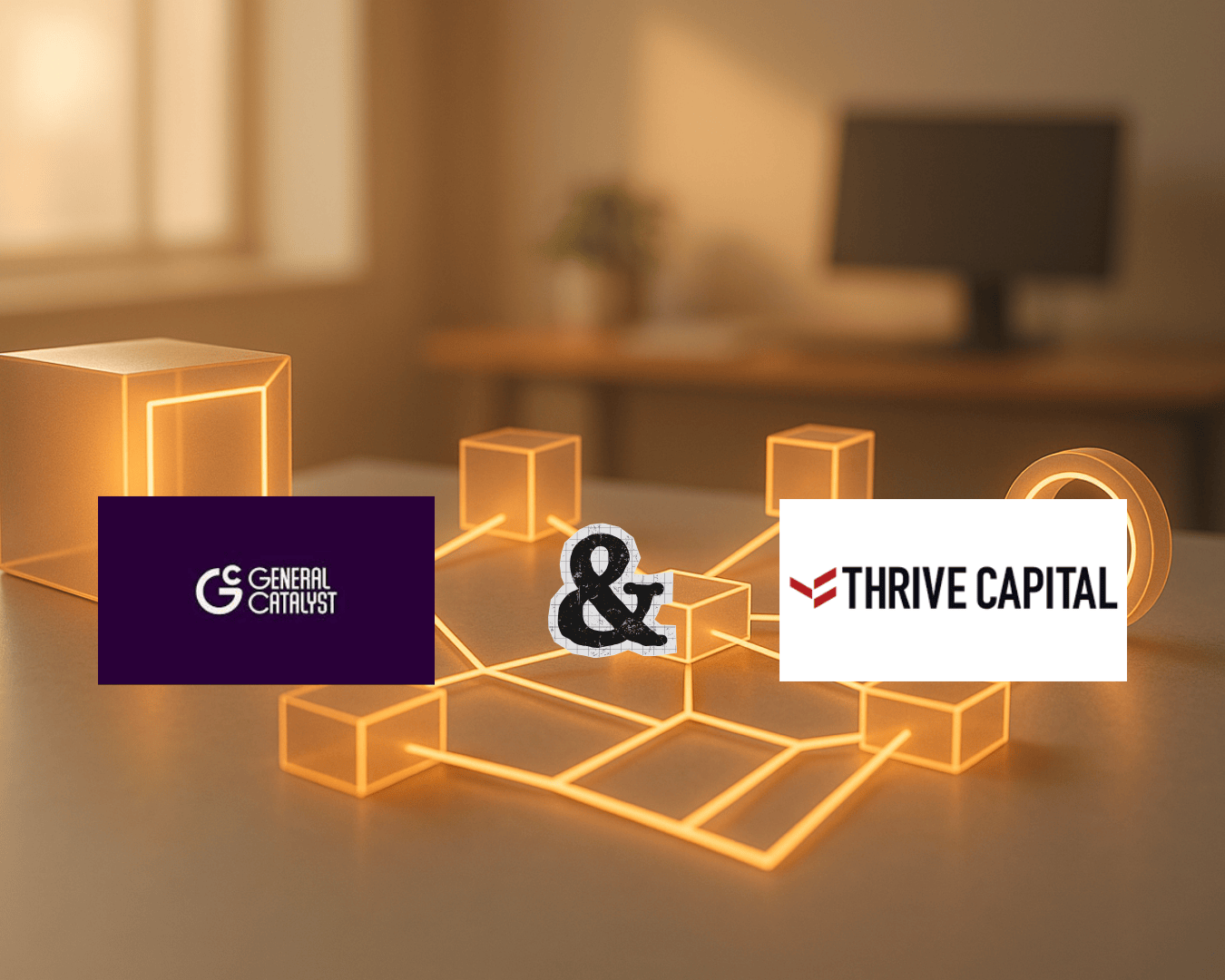







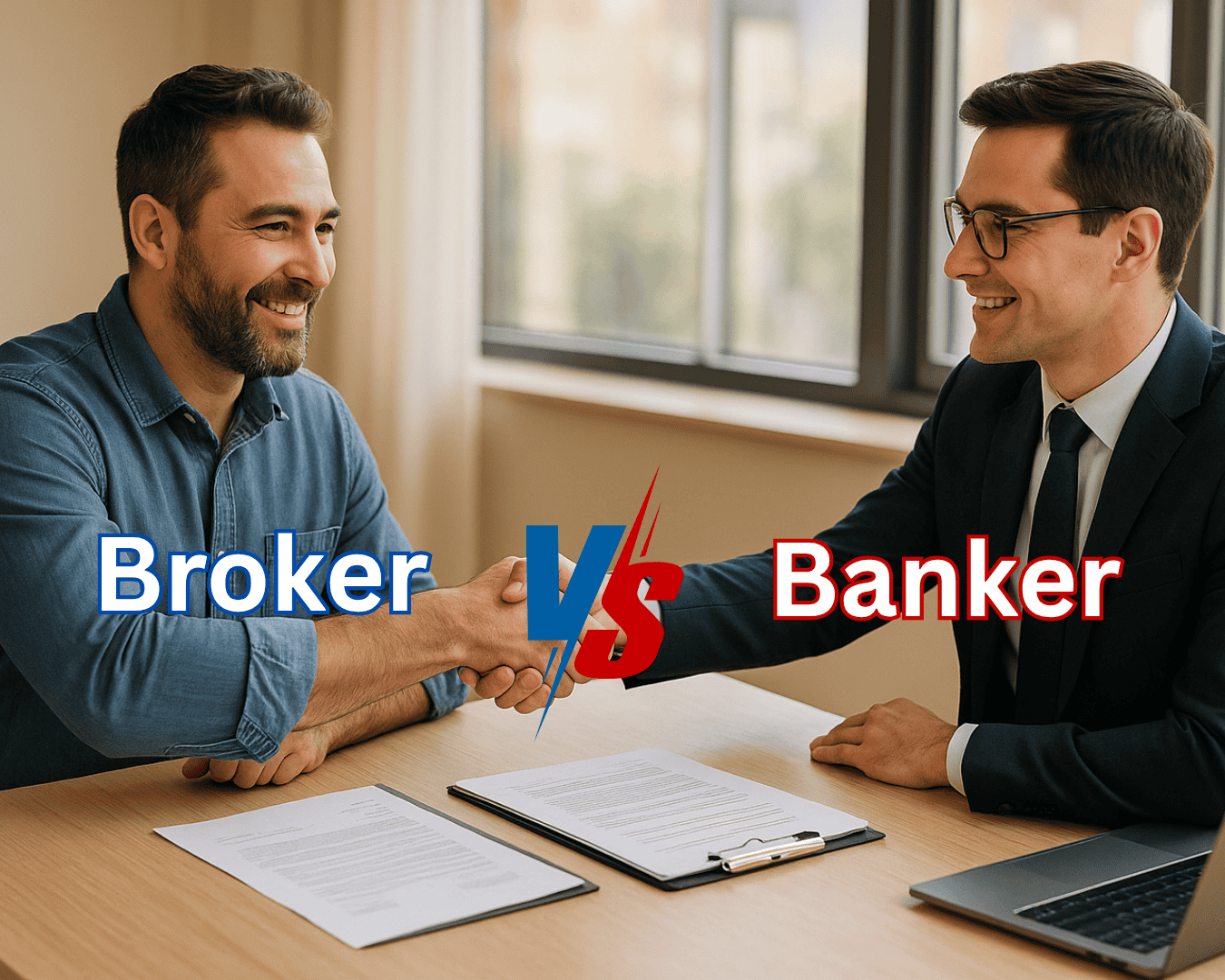

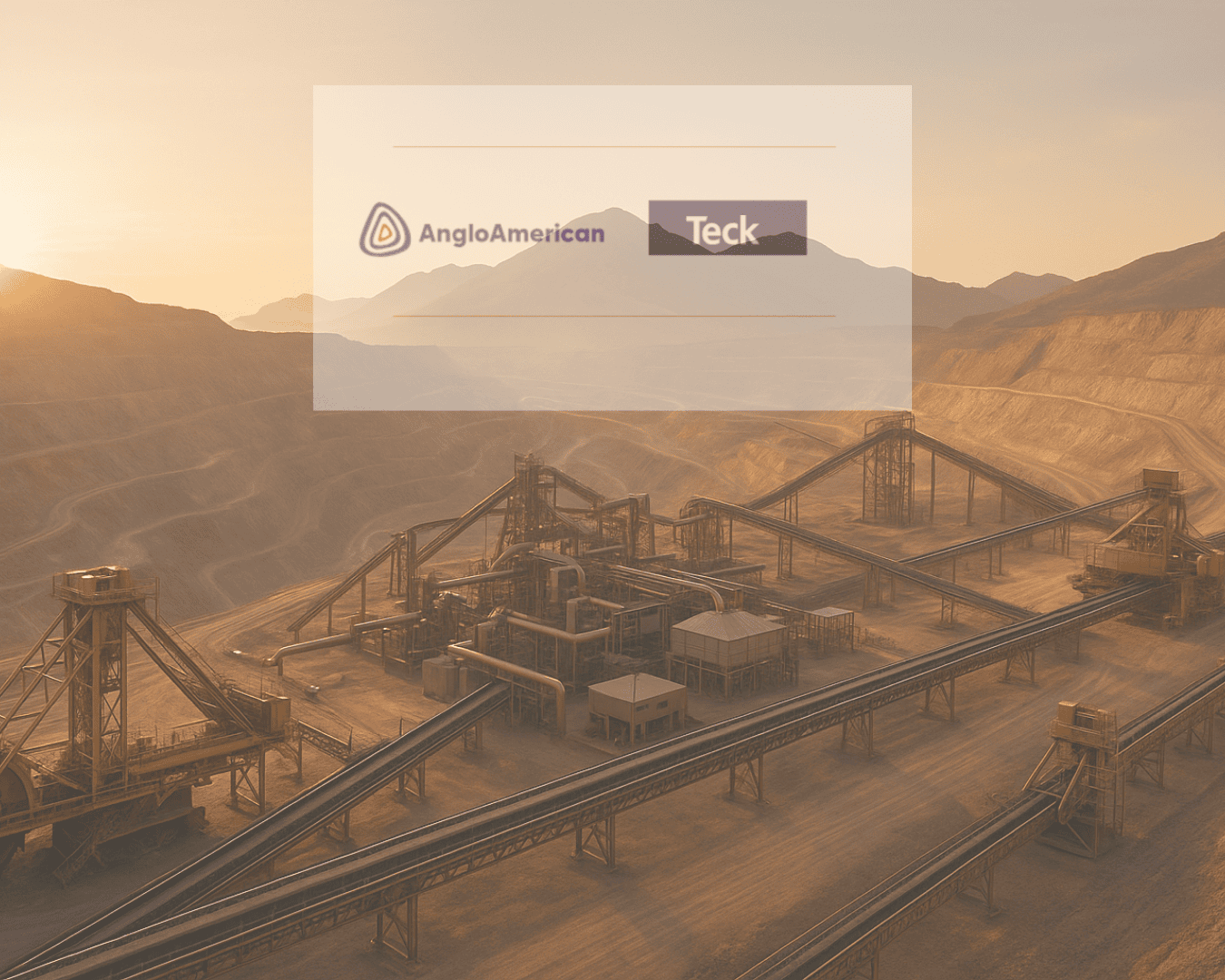

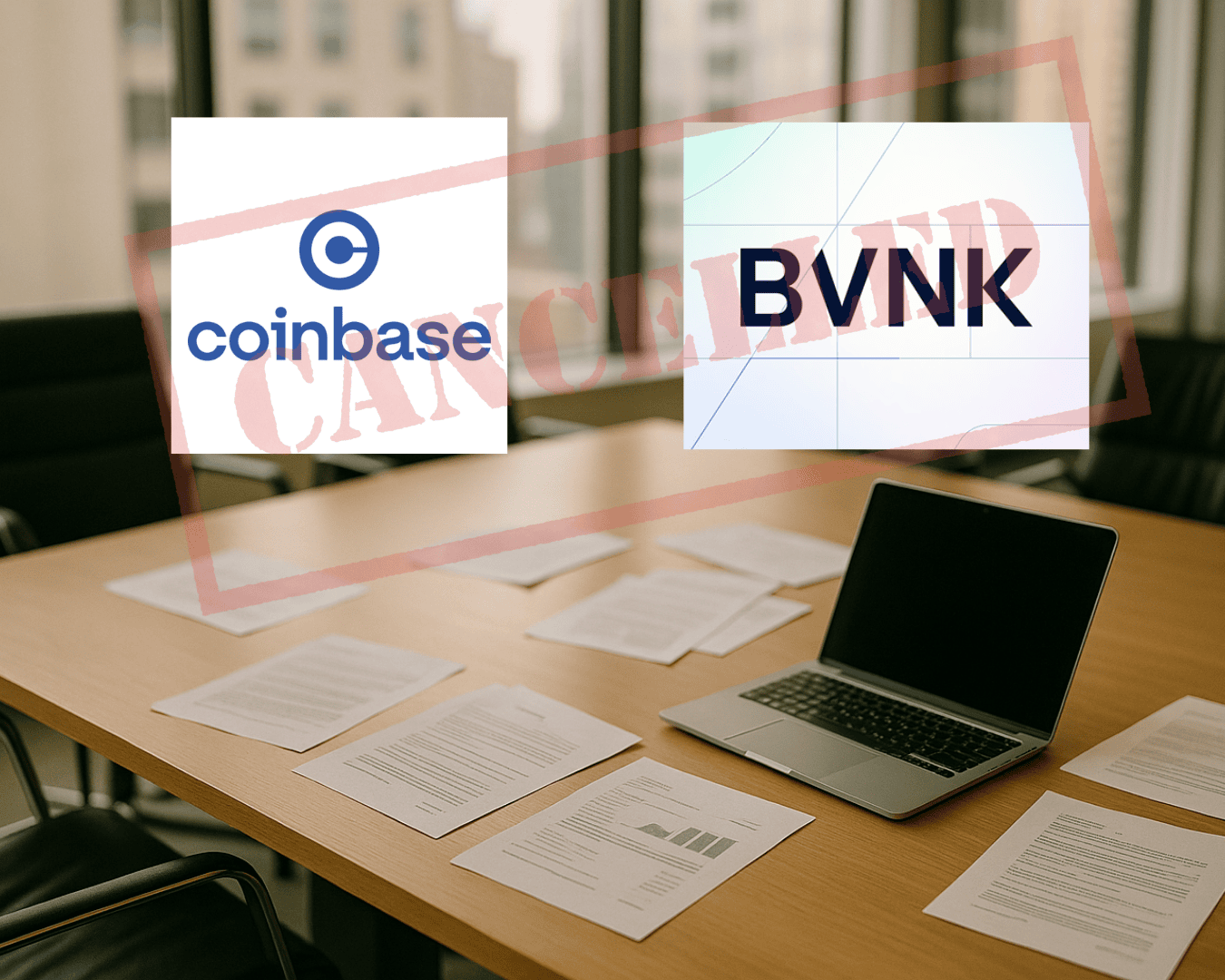









.png)

